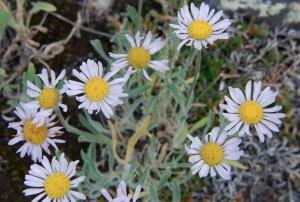
News/Reports
McQueen Creek Biological and Physical Overview
ORIGINAL PURPOSE
To protect vegetation typical of the Middle Grassland in interior British Columbia
Physical:
The reserve lies in the Batchelor Hills area of the Thompson Plateau, adjacent to the valley of the North Thompson River. Soils are predominantly dark brown Chernozems of the McQueen Association, developed on morainal deposits. These are well drained soils of silty loam to silty clay-loam texture. The climate is generally dry.
See the full PDF here: mcqueen-2
Biological:About two thirds of the reserve is grassland, the remainder is forested. Grasslands are fairly typical of the Middle Grassland elevational zone in British Columbia which occurs above the sagebrush-bunchgrass zone of the valley bottoms and below the fescue-dominated zones at higher levels. Typical communities here, especially on southerly exposed slopes, are dominated by bluebunch wheatgrass and Sandberg’s bluegrass. Prickly-pear cactus may be locally abundant, and well-spaced ponderosa pine trees occurred in some areas. These have mostly been killed by mountain pine beetle (2007-2009). Other characteristic plants include junegrass, needle-and-thread grass, yarrow,
Nuttall’s pussytoes, pasture sage, arrow-leaved balsam-root, cut-leaved daisy and oyster plant. Communities on northerly exposed slopes show affinities with the Upper Grassland elevational zone, being dominated by rough fescue, bluebunch wheatgrass and Thompson’s paintbrush, or by rough fescue and death-camas. The steeper north- facing slopes above McQueen Creek support Douglas-fir- pinegrass stands.
A variety of showy spring wildlflowers is present, including arrow-leaved balsam-root, nodding onion, heart-leaved arnica, upland larkspur, fleabanes, yellowbell, old man’s whiskers, large-fruited desert-parsley and silverleaf phacelia.
Fauna has not been surveyed. Lands in this area are important winter range for mule deer.
SCIENTIFIC NAMES OF SPECIES MENTIONED IN THE MCQUEEN CREEK ER ACCOUNT
Flora
arnica, heart-leaved (Arnica cordifolia)
balsom-root, arrow-leaved (Balsamorhiza-sagittata)
bluegrass, Sandberg’s (Poa secunda ssp. sandbergii)
cactus, prickly-pear (Opuntia fragilis)
death-camas (Zigadenus spp.)
desert-parsley, large-fruited (Lomatium macrocarpum)
Douglas fir (Pseudotsuga menziesii)
fescue, rough (Festuca campestris)
fleabane (Erigeron spp.)
grass, needle-and-thread (Hesperostipa comata ssp. comata and ssp. intermedia)
Junegrass (Koeleria macrantha)
larkspur, upland (Delphinium nuttallianum)
old man’s whiskers (Geum triflorum var. ciliatum and var. triflorum)
onion, nodding (Allium cernuum var. cernuum)
oyster plant (Tragopogon dubius)
paintbrush, Thompson’s (Castilleja thompsonii)
phacelia, silverleaf (Phacelia hastata)
pine, ponderosa (Pinus ponderosa)
pinegrass (Calamagrostis rubescens)
pussytoes, Nuttall’s (Antennaria parvifolia)
sagewort, prarie (Artemisia frigid) aka pasture sage*
wheatgrass, bluebunch (Pseudoroegneria spicata ssp.)
yarrow (Achillea spp.)
yellow bell (Fritillaria pudica)
INVASIVE
cinquefoil, sulphur (Potentilla recta)
knapweed (Centaurea spp.)
toadflax, Dalmatian (Linaria genistifolia spp. dalmatica)
Fauna
Deer, Mule (Odocoileus hemionus)

